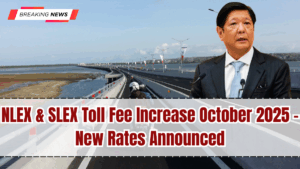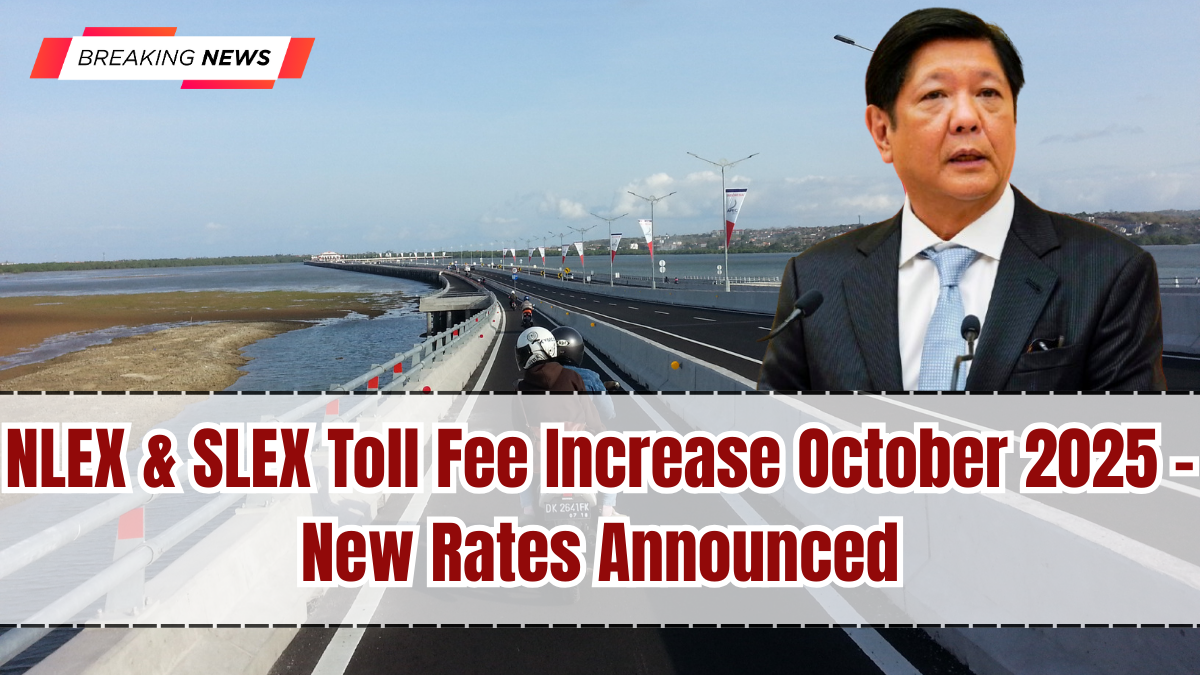The Expressway Toll Increase 2025 is official. Starting October 2025, both the North Luzon Expressway (NLEX) and the South Luzon Expressway (SLEX) will implement higher toll rates.
For daily commuters and long-haul drivers, this is big news. Thousands rely on these expressways every day, and any change in toll fees directly impacts budgets, logistics, and even product prices in the market.
So, how much more will motorists pay, why was this increase approved, and are there any exemptions? Let’s break it down.

Why Did Toll Rates Increase in 2025?
The toll hike comes after years of petitions by expressway operators. Rising construction costs, maintenance, and expansion projects all contributed to the increase.
Authorities explained that regular adjustments are part of concession agreements. The new rates ensure that expressways remain safe, efficient, and capable of handling rising traffic volumes.
While unpopular, the hikes are seen as necessary to maintain infrastructure quality.
How Much Are the New NLEX Rates?
Motorists using NLEX will feel the difference starting October.
-
Class 1 (Cars, SUVs): ₱65 increase for long routes
-
Class 2 (Buses, Small Trucks): ₱85 increase
-
Class 3 (Large Trucks/Trailers): ₱100 increase
For shorter trips, the increase is smaller—around ₱10–₱20 depending on entry and exit points.
What About SLEX Rates?
SLEX, one of the busiest expressways in the country, also gets higher fees.
-
Class 1 (Cars): ₱60–₱70 increase on average
-
Class 2 (Buses, Vans): ₱80–₱90 increase
-
Class 3 (Large Trucks): Up to ₱100 increase
This means a typical round trip from Alabang to Calamba now costs significantly more for private cars.
How Do These Changes Affect Daily Commuters?
For private car owners, the additional ₱60–₱70 per trip quickly adds up. Someone commuting daily on SLEX could spend ₱1,200–₱1,400 more per month.
Bus operators will also feel the impact, and higher operating costs are expected to lead to fare adjustments. Jeepney routes connected to expressways may also raise fares.
This is why many groups are already calling for subsidies or fare regulation to protect commuters.
How Will Businesses and Logistics Companies Be Affected?
The logistics industry is one of the hardest hit by toll increases. Delivery trucks, buses, and freight carriers regularly use NLEX and SLEX to transport goods between Luzon provinces.
With higher tolls, transport costs go up, which often means higher prices for food and goods in the market. Businesses warn this could add to inflationary pressure at the end of 2025.
Some companies are already exploring alternative routes, though slower travel times may offset savings.
Are There Any Exemptions or Discounts?
Yes, but they are limited.
-
Public Utility Buses (PUBs): Some exemptions are being discussed to keep fare hikes manageable.
-
Electronic Toll Collection Discounts: Frequent users with RFID accounts may get small rebates under loyalty programs.
-
Government Vehicles: Exemptions apply in certain cases, particularly for emergency and disaster response units.
Still, for most private motorists, the higher tolls are unavoidable.
How Are Motorists Reacting to the Hike?
Reactions have been mixed. Some drivers accept the increase as necessary for better roads, but many commuters and small business owners are frustrated.
Online forums and social media are filled with concerns about higher living costs. Transport groups are even considering petitions to delay implementation or ask for staggered increases instead of a one-time hike.
Are There Expansion Projects Linked to the Increase?
Yes. Officials confirmed that revenue from higher tolls will fund several expansion and improvement projects.
-
NLEX-SLEX Connector: Expected to reduce travel time between north and south.
-
Road Widening: Additional lanes to reduce bottlenecks.
-
Smart Tolling Systems: More cashless lanes to improve traffic flow.
These projects are meant to justify the higher fees, promising smoother and faster journeys in the long run.
What Should Motorists Do to Adjust?
Drivers can take steps to soften the impact of the toll hike.
-
Use RFID for discounts and convenience.
-
Plan trips wisely to reduce unnecessary expressway travel.
-
Consider carpooling with family or coworkers.
-
Explore alternative routes when time allows.
For businesses, route optimization and fleet management will be key to keeping costs under control.
Conclusion
The NLEX & SLEX Toll Fee Increase October 2025 marks another adjustment that will affect commuters, businesses, and everyday motorists. While the higher fees are tough to swallow, authorities argue that the improvements in infrastructure will benefit everyone in the long run.
For now, Filipinos must budget wisely, explore alternatives, and make the most of available discounts. Expressways remain the fastest way to travel across Luzon—but in 2025, that speed comes at a higher price.
FAQs
When will the new toll rates take effect?
The new NLEX and SLEX toll rates will start in October 2025.
How much is the increase for cars?
Private cars (Class 1) will pay an extra ₱60–₱70 per trip on average.
Are public buses exempt from the toll hike?
Some exemptions and subsidies for buses are being discussed, but most will still see higher fees.
Why did authorities approve the increase?
To cover rising costs of maintenance, expansion projects, and improved traffic systems.
Will there be more toll hikes in the future?
Yes. Adjustments are scheduled regularly under concession agreements, so motorists should expect gradual increases over time.
Click here to know more.
